Clearing the AC Drain Line with an Air Compressor: Step-by-Step Guide

Keeping your air conditioning unit in top shape is essential for ensuring a comfortable indoor environment. One common problem that homeowners face is a clogged condensate drain line. Over time, dirt, dust, and debris can accumulate in the drain line, leading to blockages and potential water leaks. Clearing the AC drain line with an air compressor is a simple yet effective method to address this issue.
Before you begin, it’s important to gather the necessary tools and equipment. You will need an air compressor with a nozzle attachment, a wet/dry vacuum, a rag or towel, and a bucket or container to collect any excess water. Additionally, it’s recommended to wear protective gloves and goggles to prevent any potential debris from causing harm.
The first step in clearing the AC drain line with an air compressor is to locate the access point. This is typically found near the indoor air handler unit or furnace. Remove the access cap and use the wet/dry vacuum to remove any standing water from the drain pan. Next, attach the nozzle attachment to the air compressor and set the pressure to a low setting to avoid damaging the drain line.
With the air compressor prepared, insert the nozzle into the access point of the drain line. Slowly apply air pressure, allowing it to travel through the drain line and dislodge any obstructions. You may hear gurgling noises or see water flowing out as the clog is cleared. If the drain line is particularly stubborn, you can try alternating between short bursts of air and using the wet/dry vacuum to suction out any loosened debris.
Once you detect that the drain line is clear and water is flowing freely, remove the air compressor nozzle and replace the access cap. It’s a good practice to pour a small amount of bleach or vinegar through the drain line to kill any remaining bacteria or mold growth. Finally, monitor the AC unit for any signs of water leaks or drainage issues in the following days to ensure a successful clearing of the drain line.
Regularly clearing the AC drain line with an air compressor can prevent potential water damage and improve the efficiency of your air conditioning system. By following this step-by-step guide, you can easily maintain your AC unit and enjoy a cool and comfortable home.
Why Clearing the AC Drain Line is Important
The AC drain line plays a crucial role in the functioning of your air conditioning system. It is responsible for removing the condensation that builds up inside the unit and channeling it away from your home. If the drain line becomes clogged or blocked, it can lead to a number of issues that can compromise the efficiency and performance of your AC system.
One of the main reasons why clearing the AC drain line is important is to prevent water damage to your home. When the drain line is blocked, the condensation that accumulates can overflow and leak into your walls, ceilings, or floors, causing mold and rot. This can lead to costly repairs and the potential for health issues due to exposure to mold.
In addition to water damage, a clogged drain line can also result in reduced cooling efficiency. When the drain line is blocked, it can cause the AC unit to work harder to remove the condensation, leading to increased energy consumption and higher utility bills. Clearing the drain line regularly can help ensure that your AC system operates at its optimal level of efficiency, keeping your home cool and comfortable.
Another important reason to clear the AC drain line is to prevent the growth of bacteria and algae. When the drain line is clogged, moisture can accumulate and create a breeding ground for these potential contaminants. If left unchecked, these microorganisms can circulate throughout your home, leading to unpleasant odors and potential health issues for you and your family. Regular maintenance and clearing of the drain line can help prevent the growth of bacteria and algae, ensuring clean and healthy air in your home.
Overall, clearing the AC drain line is a simple yet important step in maintaining the functionality and efficiency of your air conditioning system. By preventing water damage, improving cooling efficiency, and reducing the risk of bacterial growth, regular maintenance of the drain line can help extend the lifespan of your AC unit and keep you comfortable all year round.
What is an AC Drain Line
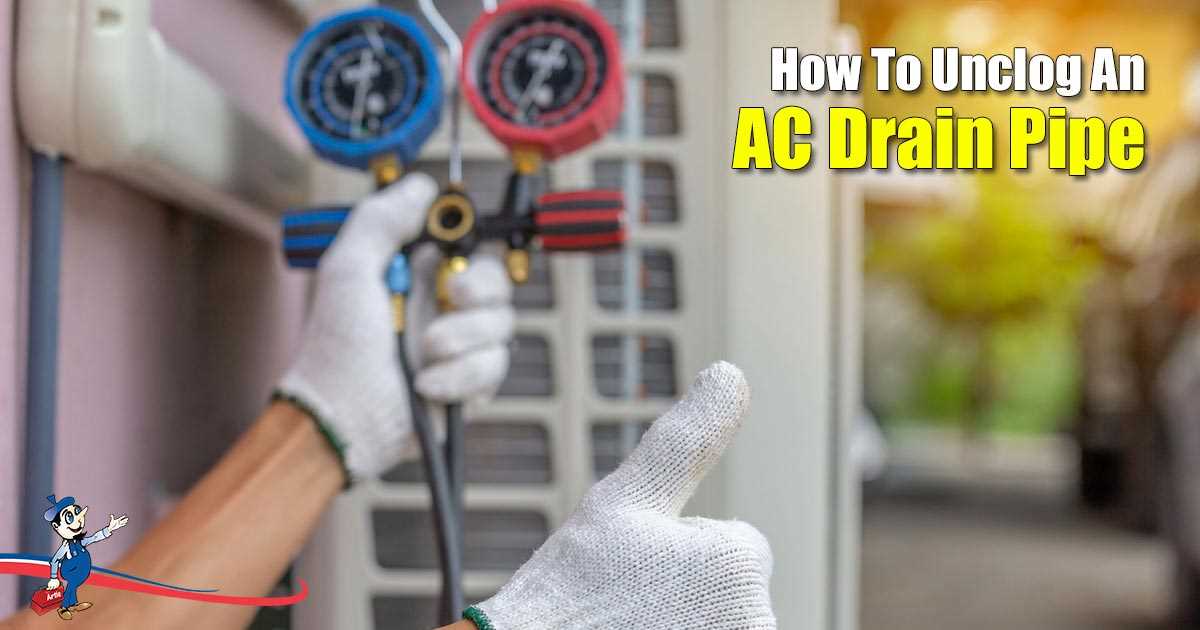
The AC drain line, also known as the condensate drain line, is an essential component of an air conditioning system. It is responsible for removing the condensation that is produced when warm air passes over the cold evaporator coil in the AC unit.
The condensation that is formed is then funneled through the drain line and expelled outside the building. The drain line plays a crucial role in preventing water damage and maintaining the efficiency of the AC system.
In most air conditioning units, the drain line is made of PVC or a similar material and is usually located near the indoor unit. It is connected to a drain pan or a collection tray that catches the condensation.
Over time, the drain line can become clogged with dirt, algae, or other debris, causing the condensation to back up and potentially lead to leaks or water damage. Regular maintenance, including clearing the drain line, is necessary to ensure the proper functioning of the AC system.
Tools You Will Need
Air Compressor
To clear the AC drain line, you will need an air compressor. This tool uses compressed air to blow out any accumulated debris or blockages in the drain line.
Air Hose
An air hose is necessary to connect the air compressor to the AC drain line. Make sure the air hose is long enough to reach the drain line, and that it has the appropriate fittings to connect to the compressor and drain line.
Nozzle Attachment
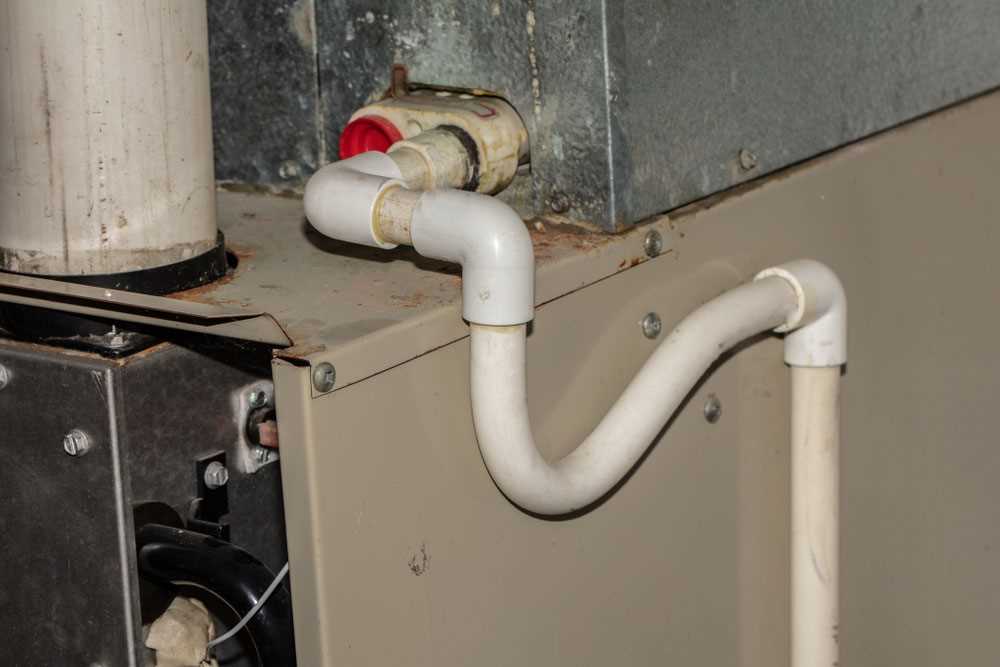
A nozzle attachment is needed to direct the flow of air from the air hose into the drain line. This attachment helps to focus the air pressure and ensure that it reaches the blockage efficiently.

Goggles
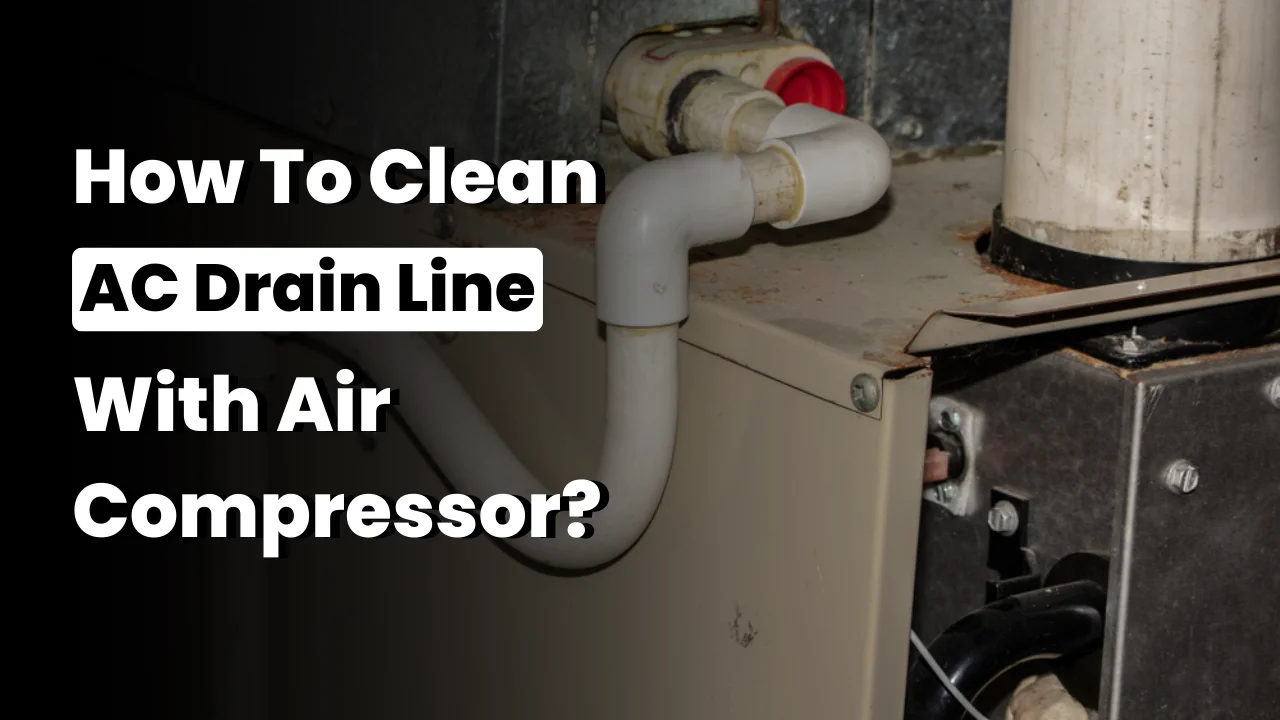
It is important to protect your eyes from any debris that may be blown out of the AC drain line during the clearing process. Wear goggles to prevent any potential injury.
Gloves
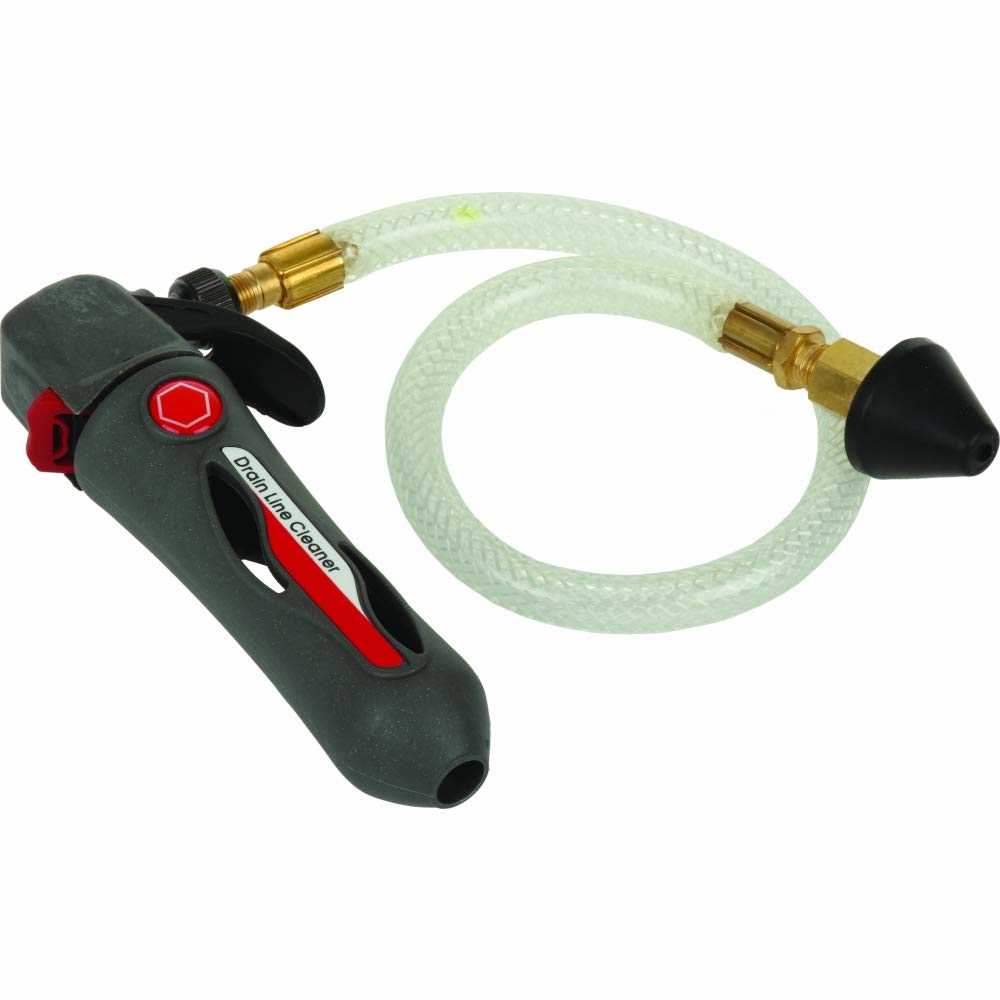
Wearing gloves is recommended to protect your hands from any sharp or dirty surfaces while working on the AC drain line. This will help prevent any cuts or injuries.
Bucket or Towels
As the AC drain line may be filled with stagnant water, it is a good idea to have a bucket or towels on hand to catch any water that may come out during the clearing process. This will help prevent any water damage to the surrounding area.

Flashlight
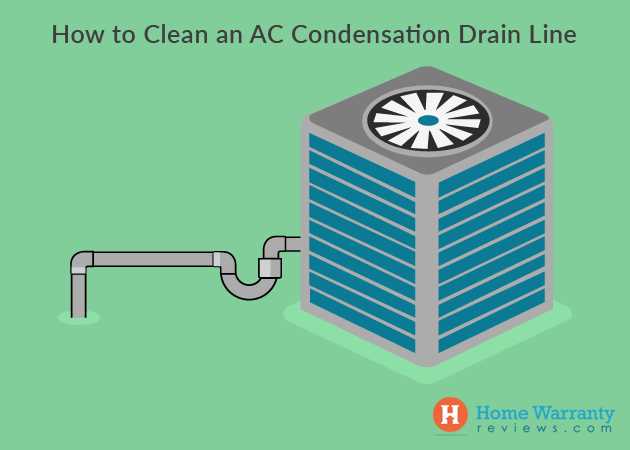
A flashlight will come in handy to inspect the drain line for any visible blockages. Make sure to have a reliable flashlight with good brightness and battery life to effectively see inside the drain line.
Cleaning Solution
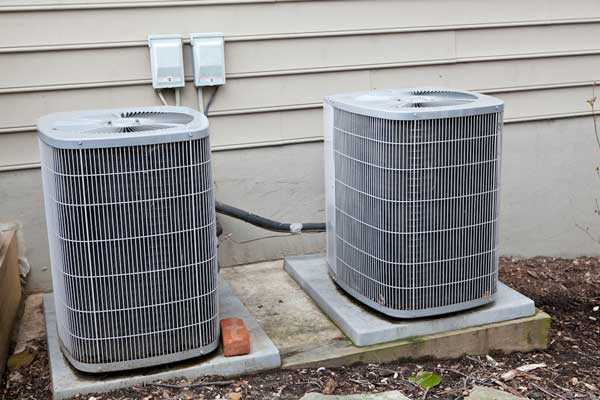
After clearing the AC drain line, it is recommended to clean it to remove any remaining debris or build-up. Prepare a cleaning solution, such as a mixture of vinegar and water, to flush out the drain line and ensure it is clear and functioning properly.
Step 1: Find the AC Drain Line
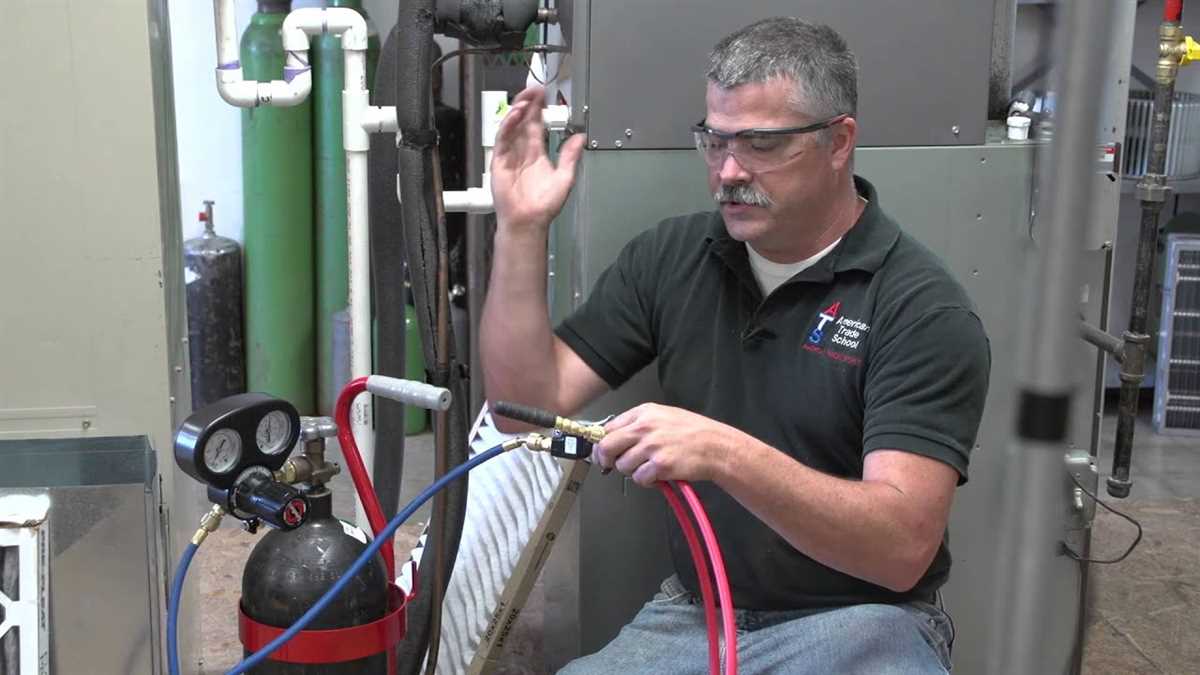
Before you can start clearing the AC drain line with an air compressor, you need to locate the drain line first. The AC drain line is typically a small PVC pipe that is attached to the air conditioning unit. It is usually located near the outdoor unit or inside the attic.
To find the AC drain line, you can start by checking the area around the outdoor unit. Look for a small plastic pipe that is connected to the unit. It is often located near the bottom of the unit, close to the ground. The pipe may be white or black in color, depending on the installation.
If you don’t find the drain line near the outdoor unit, you may need to check inside the attic. Look for a PVC pipe connected to the air conditioning system. It is usually located near the condensate pan or the evaporator coil. The pipe may be hidden behind insulation or other components of the HVAC system, so be sure to inspect carefully.
Once you have located the AC drain line, make sure that it is accessible. Clearing the drain line with an air compressor requires access to both ends of the pipe. If the drain line is obstructed or inaccessible, you may need to remove any obstructions or seek professional help to clear the line.
Step 2: Prepare the Air Compressor
Before you can begin clearing the AC drain line with an air compressor, you need to properly prepare the compressor for use. Here are the steps to follow:
- Gather the necessary equipment: Make sure you have all the required equipment for using an air compressor, including safety goggles, gloves, and ear protection.
- Inspect the air compressor: Before starting, visually inspect the air compressor to ensure it is in good working condition. Check for any visible damage or leaks.
- Check the air pressure: Verify that the air compressor is set to the appropriate pressure for your specific task. Consult the manufacturer’s instructions for the recommended pressure settings.
- Connect the air compressor: Attach the air compressor to a power source and ensure it is securely connected. Check that the hoses and fittings are tight and properly attached.
- Prime the air compressor: If necessary, prime the air compressor according to the manufacturer’s instructions. This may involve filling the compressor tank with oil or lubricating certain components.
- Test the air compressor: Before using the air compressor to clear the AC drain line, run a quick test to ensure that it is functioning properly. Listen for any unusual noises or vibrations and check for proper air output.
Following these steps will help ensure that your air compressor is ready and safe to use for clearing the AC drain line. It is important to always prioritize safety and follow the manufacturer’s instructions when working with any equipment.
Step 3: Connect the Air Compressor to the AC Drain Line
Once you have gathered all the necessary tools and prepared the AC drain line, it’s time to connect the air compressor to the line. Follow these steps to ensure a proper connection:
- Locate the end of the AC drain line. This is usually found near the outdoor unit of your air conditioning system.
- Attach the appropriate nozzle or attachment to the end of the air compressor hose. The nozzle should allow for a secure fit onto the drain line.
- Insert the nozzle into the end of the drain line, making sure it fits securely.
- Tighten any clamps or fittings to ensure there are no air leaks between the nozzle and the drain line.
- Check that the air compressor is properly connected to a power source and turned off before proceeding.
By following these steps, you will have successfully connected the air compressor to the AC drain line, setting the stage for the next step of clearing the line. Make sure to double-check all connections and fittings to prevent any air leaks during the process.
Step 4: Apply Air Pressure to Clear the Clog
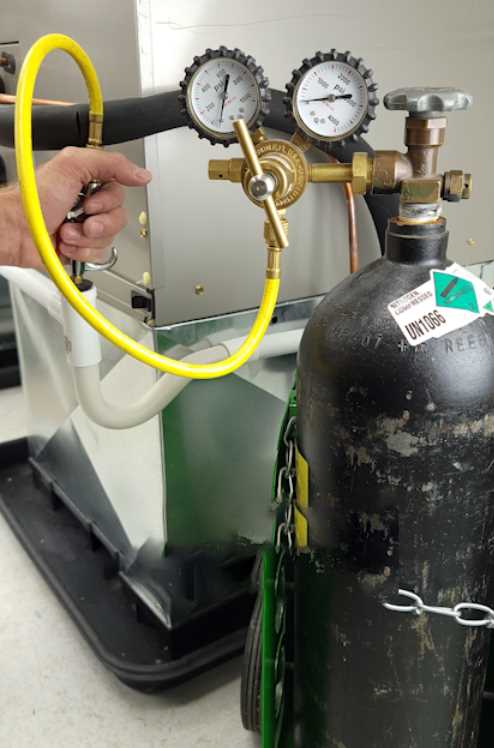
Once you have positioned the air compressor and connected it to the AC drain line, it’s time to apply air pressure to clear the clog. This step is crucial in ensuring that any blockages are effectively removed and the drain line is cleared.
1. Adjust the air compressor settings: Before applying air pressure, make sure to adjust the settings on the air compressor. Set the pressure to a level that is suitable for clearing the clog without causing any damage to the AC drain line.
2. Start the air compressor: Once the settings are adjusted, start the air compressor and allow it to build up the necessary pressure. Keep an eye on the pressure gauge to ensure that it reaches the desired level.
3. Apply air pressure to the AC drain line: Once the air compressor is ready, use its nozzle to direct a stream of compressed air into the drain line. Start with a gentle pressure and gradually increase it if necessary. The air pressure will help dislodge and push out any debris or blockages that may be causing the clog.
4. Continue applying air pressure: Keep applying air pressure to the drain line until you notice that the water begins to flow freely. This indicates that the clog has been cleared and the drain line is now unobstructed.
5. Monitor the drain line: After applying air pressure, keep an eye on the drain line to ensure that water is flowing smoothly. If you notice any signs of a persisting clog, you may need to repeat the process or seek professional assistance.
By applying air pressure to the AC drain line, you can effectively clear any clogs and ensure that your air conditioning system functions efficiently. Remember to follow safety precautions when operating the air compressor and be cautious while applying air pressure to prevent any damage to the AC drain line.
Step 5: Test for Proper Drainage
After completing the process of clearing the AC drain line with an air compressor, it is important to test whether the drainage is functioning properly. This step is crucial to ensure that any clogs or debris have been successfully eliminated and the AC unit is operating efficiently.
1. Turn on the AC Unit
Start by turning on the AC unit. Set it to a lower temperature and let it run for a few minutes. This will activate the condensation process and allow any water to flow through the cleared drain line.
2. Check for Water Flow
Inspect the drain line and look for a steady flow of water. You should be able to see water exiting the drain line and flowing smoothly into the drip pan or designated drainage area. If there is no water flow or the flow is slow and inconsistent, it may indicate that the AC drain line is still partially blocked.
3. Listen for Unusual Sounds
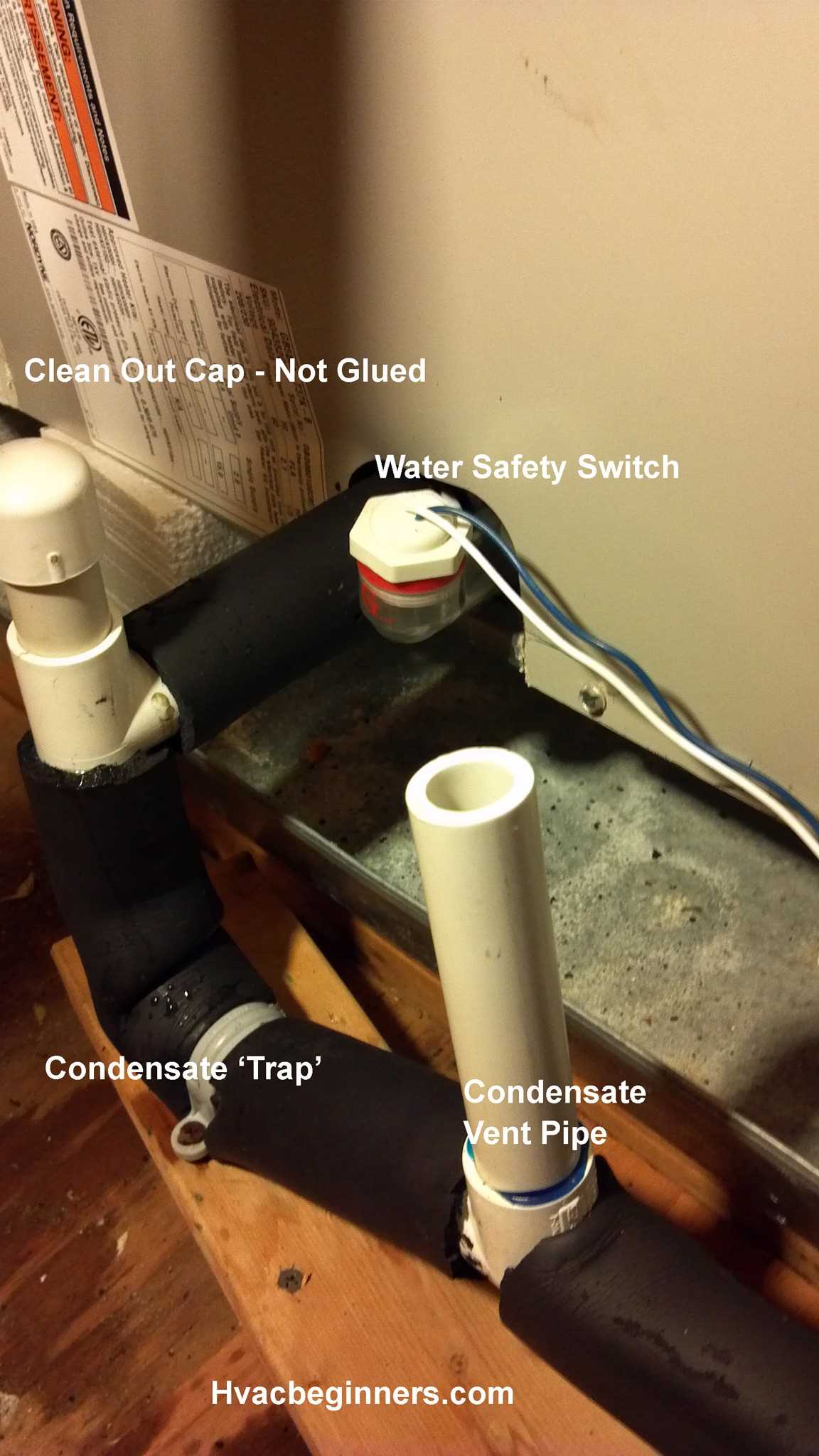
While the AC unit is running, listen for any unusual sounds coming from the drain line or the drip pan. If you hear gurgling or bubbling noises, it could be a sign of a partially blocked drain line or a blockage further down the line that requires further attention.
4. Monitor the Drip Pan
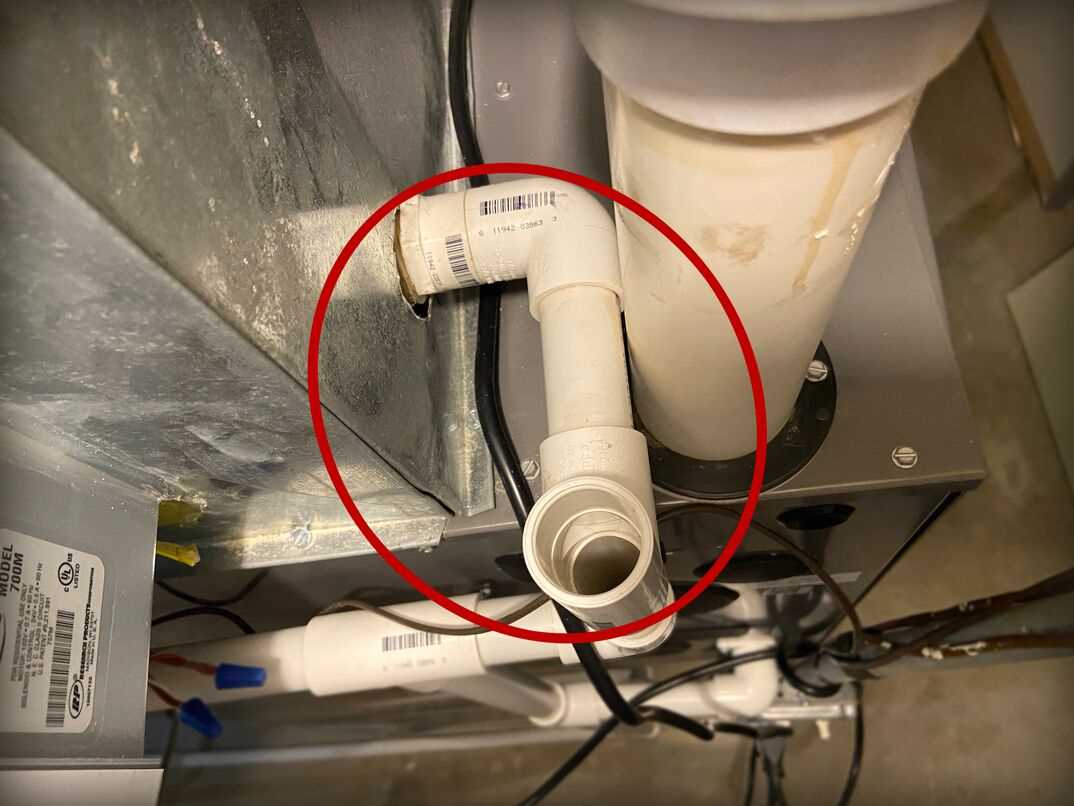
Keep an eye on the drip pan or the designated drainage area. It should collect any water that flows through the drain line. If the drip pan remains dry or accumulates only a small amount of water, there may be a blockage that needs to be addressed.
5. Repeat the Process if Necessary
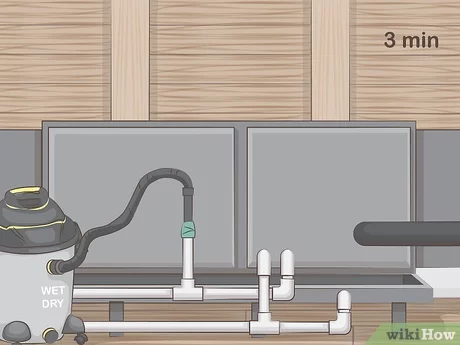
If you find any issues during the testing phase, it may be necessary to repeat the process of clearing the AC drain line with an air compressor. This will ensure that any remaining clogs or debris are fully eliminated, allowing for proper drainage.
Testing for proper drainage after clearing the AC drain line is an important step in maintaining the efficiency and performance of your AC unit. By following these steps, you can identify and resolve any potential issues, ensuring that your AC system is operating at its best.
FAQ:
What is an AC drain line?
An AC drain line is a pipe or tubing that allows condensation to drain away from the air conditioning unit. It prevents water from accumulating and causing damage to the system.
Why is it important to clear the AC drain line?
Clearing the AC drain line is important because a clogged drain line can lead to water leakage, which can damage the air conditioning unit and cause mold and mildew growth.
What are the signs of a clogged AC drain line?
Signs of a clogged AC drain line include water leaking from the unit, a musty odor in the area near the unit, and a decrease in cooling efficiency.
Can I clear the AC drain line without using an air compressor?
Yes, you can clear the AC drain line using alternative methods such as using a wet/dry vacuum, a pipe cleaner, or a mixture of hot water and vinegar. However, using an air compressor is often the most effective method.
Is it difficult to clear the AC drain line with an air compressor?
No, clearing the AC drain line with an air compressor is a fairly simple process. Just make sure to follow the step-by-step guide provided in the article to ensure safety and effectiveness.
Do I need any special tools to clear the AC drain line with an air compressor?
Yes, you will need an air compressor and a blow gun attachment. These tools can typically be purchased or rented from a hardware store or home improvement center.
Video:









